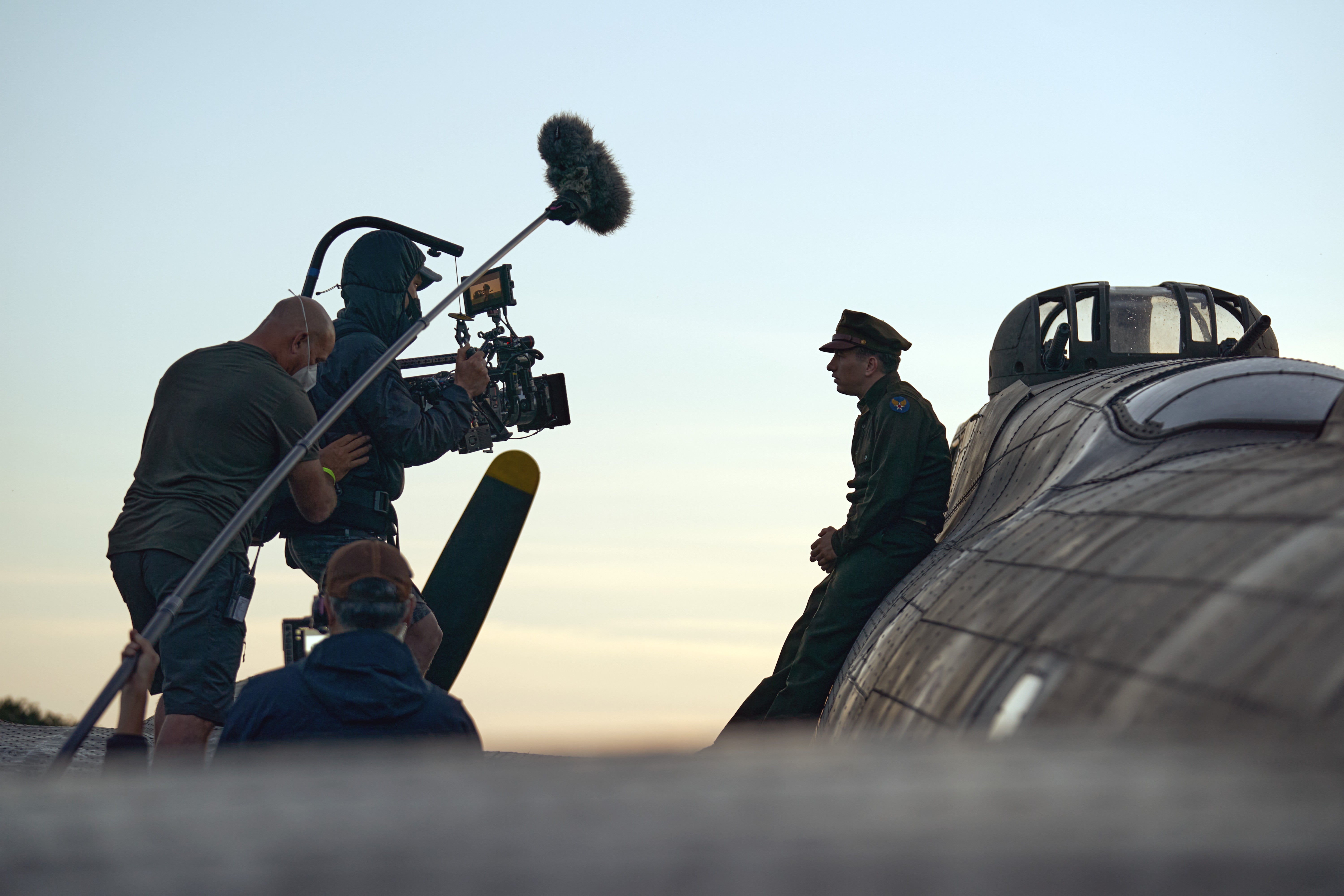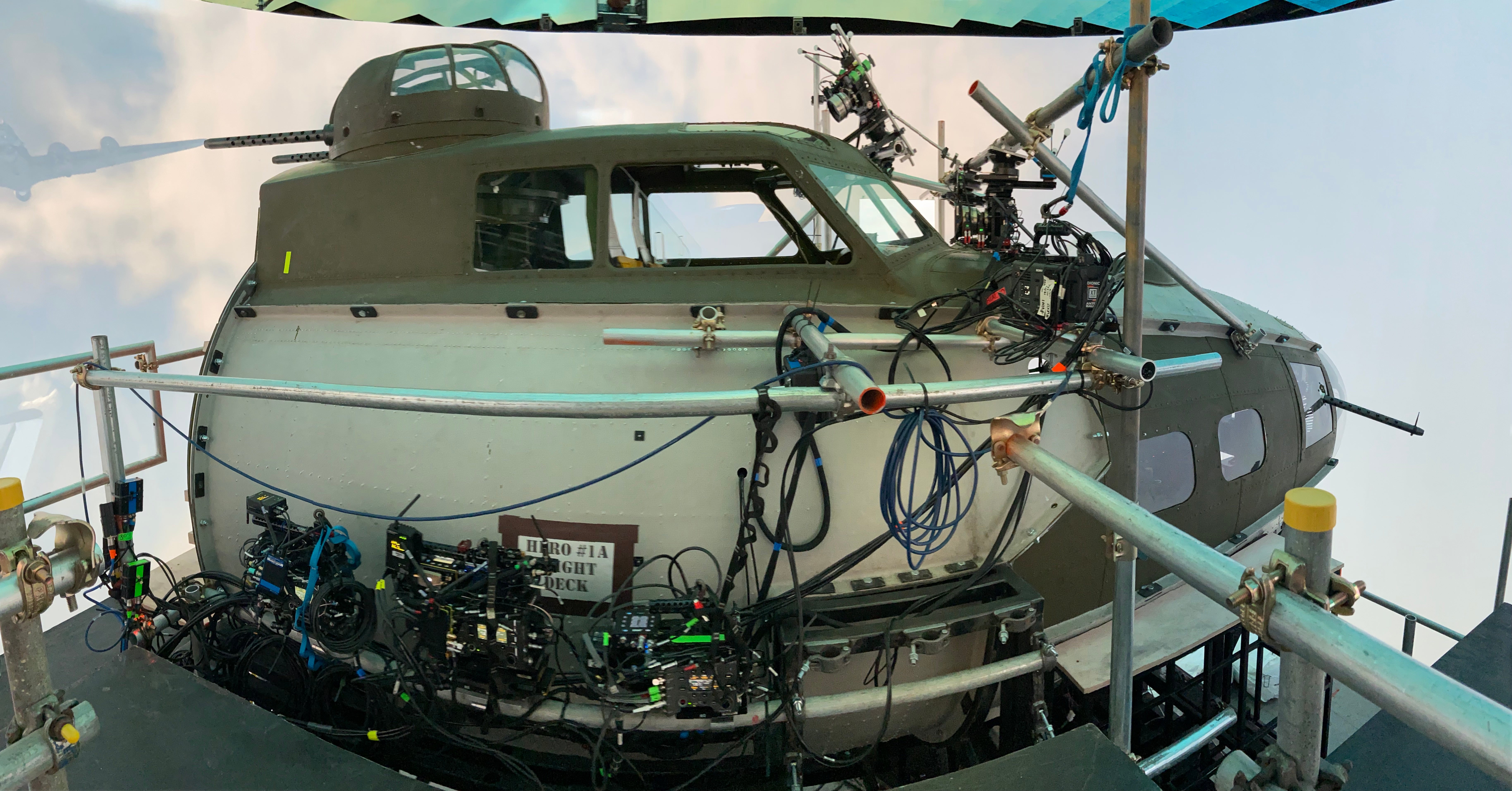
05-13-2024 - Case Study
How the Sony VENICE Elevated the Historical Accuracy of Masters of the Air
By: Yaroslav Altunin
Masters of The Air, Apple TV’s hit series focusing on World War II airmen battling German fighters above the ground and behind enemy lines, adhered to a precise level of detail. Using historical data, the creative team reproduced the astonishing events these airmen went through and the harrowing emotions they experienced.
To bring this level of detail to life and give the cast and crew the ability to see this action in real-time, producers Steven Spielberg, Tom Hanks, and Gary Goetzman tapped into the Sony VENICE, VENICE Rialto Extension System, and virtual production technologies.
Watch the trailer for Masters of the Air before we explore behind the scenes to see how this 9-episode epic was crafted.
How the Sony VENICE camera Helped Bring History To Life
During a behind-the-scenes panel at NAB 2024, Shelly Johnson, ASC, spoke with Executive Producer Gary Goetzman, Cinematographer Jac Fitzgerald, Visual Effects Supervisor Stephen Rosenbaum, Sound-Mixer Michael Minkler, and President of Lux Machina Phil Galler to uncover how they implemented the Sony VENICE cinema camera and accompanying virtual production tools.
Since its initial release in late 2017, the Sony VENICE cinema camera system and its larger ecosystem have changed how we think about what a full-size cinema camera can achieve. In combination with the Sony VENICE Rialto Extension System, filmmakers can utilize this full-size cinema camera in locations where no other high-end cinema camera can fit.
For the Masters of The Air production team, this was a crucial requirement to capture the action, emotion, and experiences of flying in a B-17 Flying Fortress heavy bomber.
“To connect to the characters,” Fitzgerald said, “We wanted to be with them. Because at that point they're in this giant tin can, they have masks on, they have all these jackets on, so it was kind of actually physically hard to get close to them.”
“But we wanted the camera to convey that,” Fitzgerald continued, “and to be feeling what they were feeling and being with them so that you're really connecting as the audience.”

For the physical set, the production team built the B-17 bombers to scale. Even then, the interior was very cramped. There was little room for a cinematographer with several actors in one space. However, with the VENICE Rialto Extension System, Fitzgerald was able to set up the camera around the actors and even shoot handheld while in close proximity to the talent.
Visual Effects Supervisor Stephen Rosenbaum and President of Lux Machina Phil Galler were tasked with creating believable real-world VFX that was projected on a virtual volume set to further elevate the performances of actors on set. The cast, directors, and cinematographer could see the world surrounding the bombers in real-time, such as explosions, flak, and enemy fighters. This interaction gave the cast something to react to, heightening the performance.
"It was incredibly important to the connective tissue for the actors,” Galler added. “I think the dedication to the historical elements as well as the ability to, on the fly, add creative elements, you know, more explosions, more tracer fire, more flak…” gave talent something tangible to perform with. “I think it wouldn't have worked nearly as well with a green screen type solution.”
All of these were created well before the show started principle photography, which meant bringing the post-production VFX team into pre-production.
“We knew that from the beginning we weren't going to be content with just delivering storyboards or even basic pre-viz,” Rosenbaum said. “We needed to get in there and actually choreograph real action and set up real lighting.”
The Sony VENICE and its ability to integrate into virtual production workflows created a shooting experience that a traditional green screen couldn’t create.
"We brought it into a game engine, into Unreal Engine, and from there it was all editable material,” Rosenbaum explained. “The directors could re-choreograph action; they could move planes around, they could retime attack sequences, they could add interactive lighting, the DPs could light accordingly to those environments.”
For the production of this series, two concurrent volumes were used, with a third, smaller LED wall being added when needed. This VFX workflow type vastly differs from the traditional green screen, which adds digital assets and world-building after a scene is shot.
“Usually, it's like somebody like me holding an eyeline pole with a tennis ball,” Rosenbaum said. “We didn't need (for this project); we had the real thing.”
With virtual production, digital assets are instead created in pre-production and projected by LED walls on set. These large screens are then integrated into the production design, allowing the cast to see the digital world as it would appear in the final product. This will enable directors and cinematographers to fine-tune performance and blocking, creating more immersive compositions and scenes.
“I think with the complexity of it all; there’s such a dedication to the accuracy of where are the individual pilots in a particular part of the plane, where is that plane in space, how is it related to another plane, that I think it would have been very very difficult to do with tennis balls,” Rosenbaum explained. “This idea that we understand where we are and how we can also see it, I think it's something that helps enable us to tell a better story.”

The Power of A Unified Toolset
Modern productions require high-end color science and robust and versatile tools that can collaborate across multiple disciplines.
The Sony VENICE and the Rialto Extension System are built to support productions like Masters of The Air while also giving them the power to unite pre- and post-production teams via the power of virtual production stages.
Watch the full NAB 2024 BTS Panel to hear more from these incredible creatives and their work on Masters of the Air.




